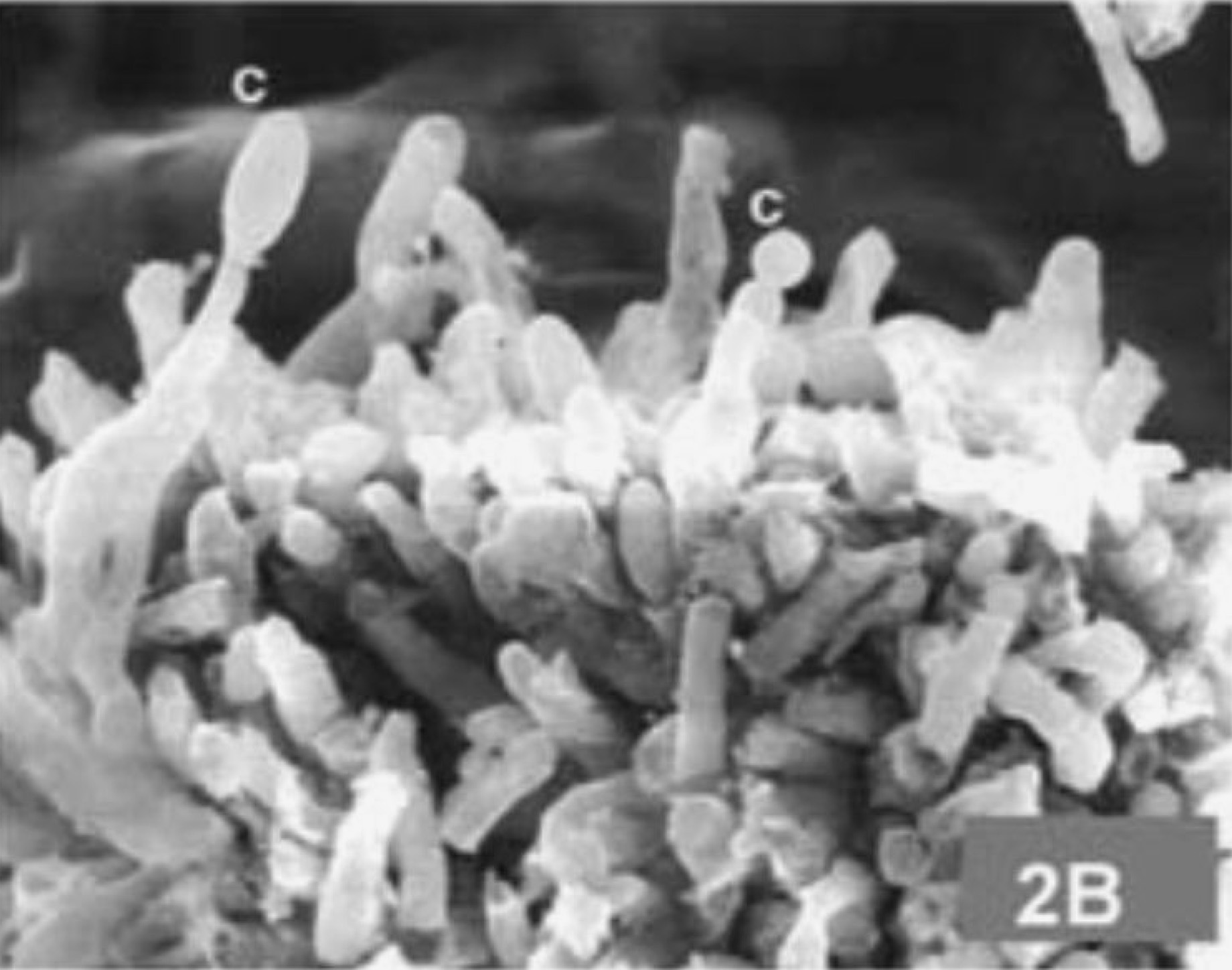Image (top of page) depicts coffee berry disease. Image (second from top) shows an electron microscope image of the lesions at 5,500 times magnification Source: M. Waller, M. Bigger and R. J. Hillocks, 2007
Coffee berry disease (CBD) is caused by the Colletotrichum fungus. This disease infects all stages of the coffee crop (from flowers to ripe fruits and, occasionally, leaves), but the real devastation comes from the infection of unripe coffee cherries between 5 and 20 weeks old (M. N. Clifford, 1985). The infected cherries develop dark lesions. The lesions begin to release spores from acervuli, small blooms in their centre. CBD causes the fruit to drop before it is ripe, and when no controls are implemented it can result in crop losses of 70 to 80 percent (Waller, 1985; Silva et al., 2006).
According to Silva et al., 2006, the first report of this disease came from Kenya in 1922. At the moment the disease is restricted to Africa. Attempts to avoid transmission of this disease to South America and Central America have led to strict controls in places such as Brazil, where it is prohibited for coffee roasters to import green coffee from Africa.
How Infection Occurs
The CBD fungus enters berries directly through their skin. Much like leaf rust hyphae, CBD’s hyphae extend into the cell walls and then through the cell membranes. The fungus first lives symbiotically with the cells in the berries but then, through the release of enzymes, it kills the cells it has invaded and lives off the dead tissue. Within 5 days, the visible signs of dying plant tissue become obvious and turn a dark olive-brown colour.
Breeding for Resistance
Plant breeders have been attempting to develop CBD-resistant varieties. Robusta appears to be totally resistant, but no arabica coffee genotypes have been shown to be totally resistant to CBD.

